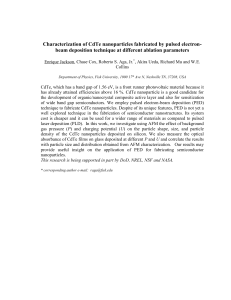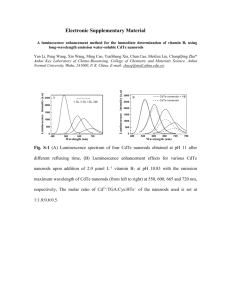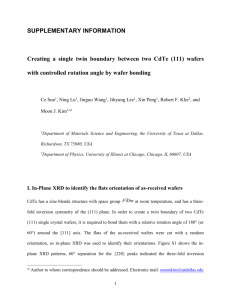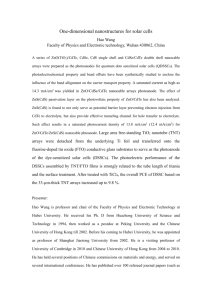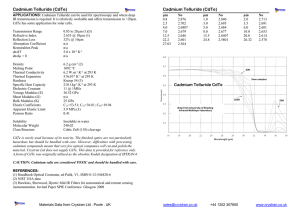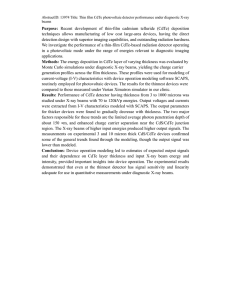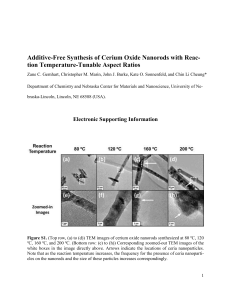Supporting information - Royal Society of Chemistry
advertisement
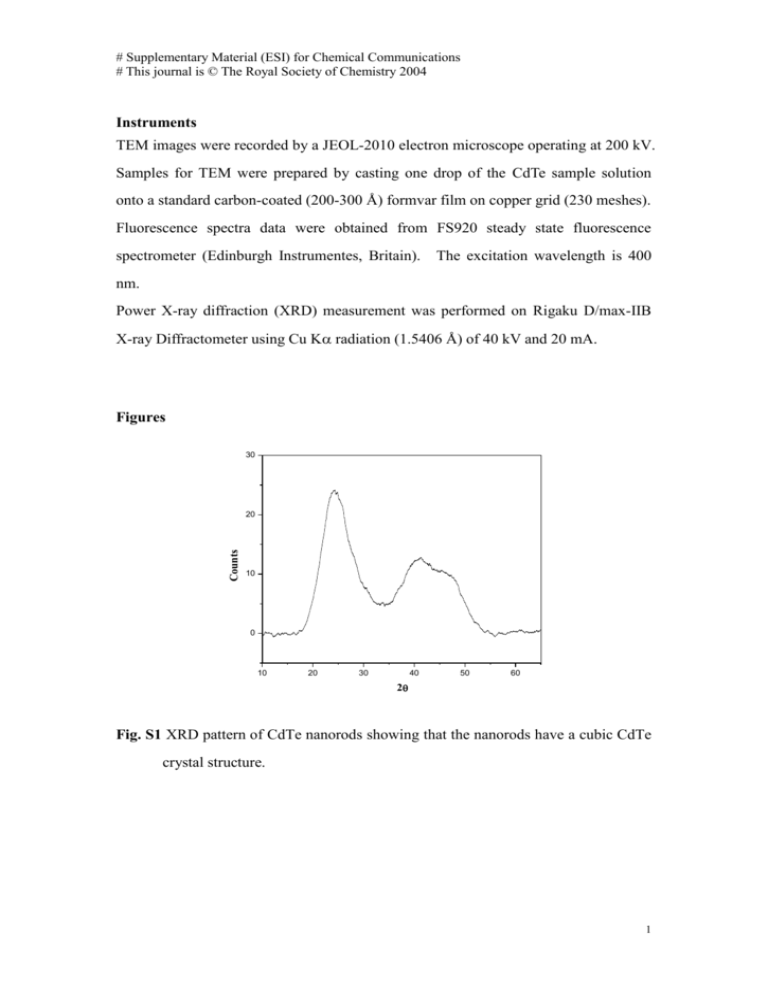
# Supplementary Material (ESI) for Chemical Communications # This journal is © The Royal Society of Chemistry 2004 Instruments TEM images were recorded by a JEOL-2010 electron microscope operating at 200 kV. Samples for TEM were prepared by casting one drop of the CdTe sample solution onto a standard carbon-coated (200-300 Å) formvar film on copper grid (230 meshes). Fluorescence spectra data were obtained from FS920 steady state fluorescence spectrometer (Edinburgh Instrumentes, Britain). The excitation wavelength is 400 nm. Power X-ray diffraction (XRD) measurement was performed on Rigaku D/max-IIB X-ray Diffractometer using Cu K radiation (1.5406 Å) of 40 kV and 20 mA. Figures 30 Counts 20 10 0 10 20 30 40 50 60 2 Fig. S1 XRD pattern of CdTe nanorods showing that the nanorods have a cubic CdTe crystal structure. 1 # Supplementary Material (ESI) for Chemical Communications # This journal is © The Royal Society of Chemistry 2004 Fig. S2 TEM image of CdTe nanowires. The CdTe QDs were found to be spontaneously reorganized into crystalline nanowires upon controlled removal of the TGA ligands. Energy of dipole attraction The energy of dipole attraction between nanoparticles can be calculated with the classical formula: E=-μ2/2πε0r(r2-dNP2). The distance between nanoparticles, r, is an important parameter for the energy of dipole attraction, which enables the growth of nanorods. 2
